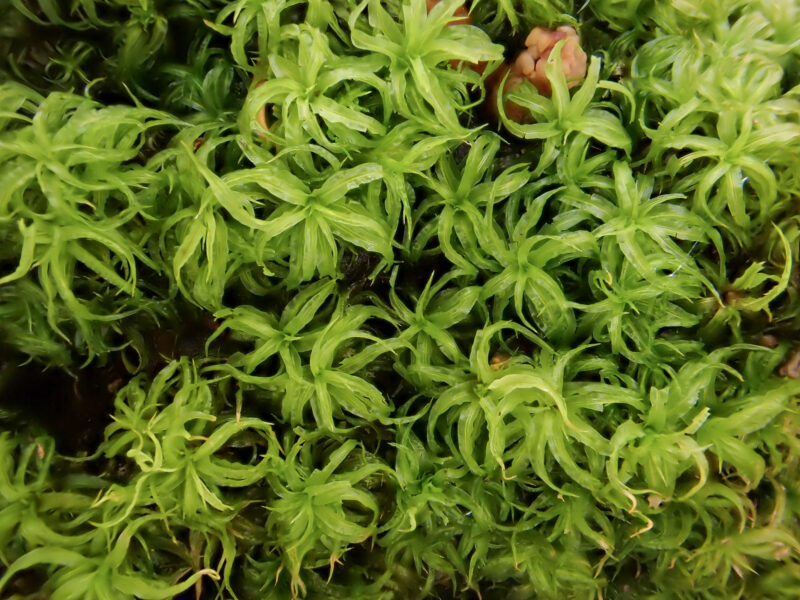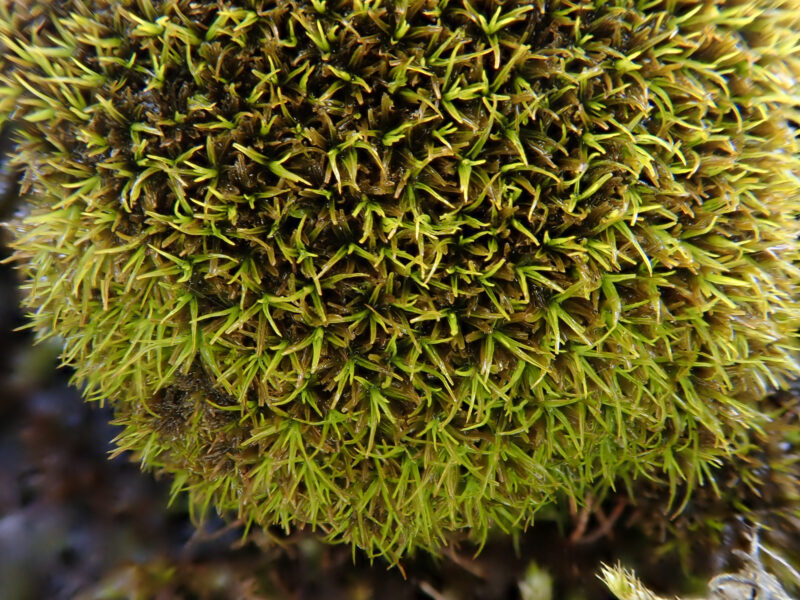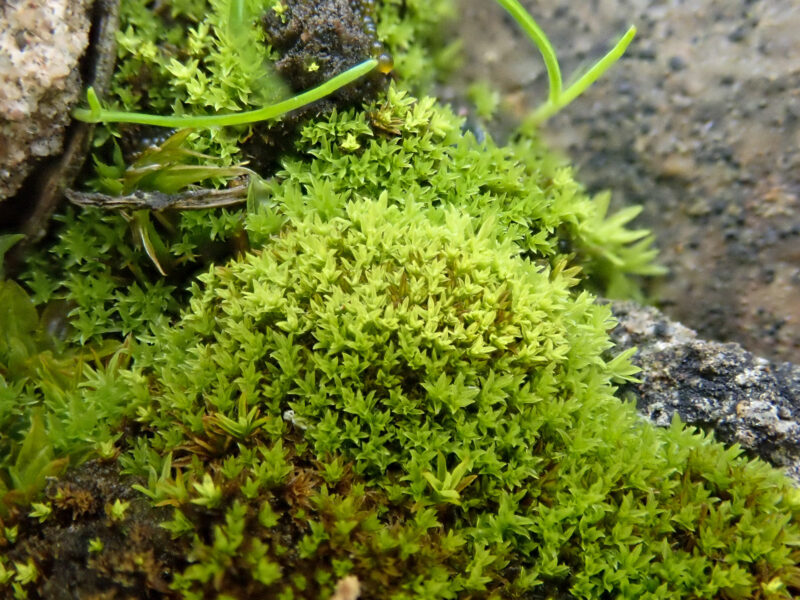Identification notes
By far our most common species of Tortella and often abundant on drystone walls, natural rock outcrops and even thin soil in hard limestone districts. Like its close relatives, it is an obligate calcicole, although in the northern and western uplands apparently less base-demanding than in the drier lowlands.
Its leaves have the highly characteristic Tortella areolation, the hyaline basal cells abruptly giving way to the small, green ones above along a sharp diagonal line. This will always separate it from lookalike cushion-formers from other genera which grow in similar habitats. Streblotrichum convolutum var. commutatum, for example, has the colour and undulate leaves of T. tortuosa, but its basal cells merge gradually into those above (and it is typically a smaller plant). In upland areas, plants with narrower, less wavy-looking leaves should be (microscopically) checked for T. fasciculata or T. pseudofragilis (very rare), both formerly recognised as T. bambergeri.
Read the Field Guide account




















